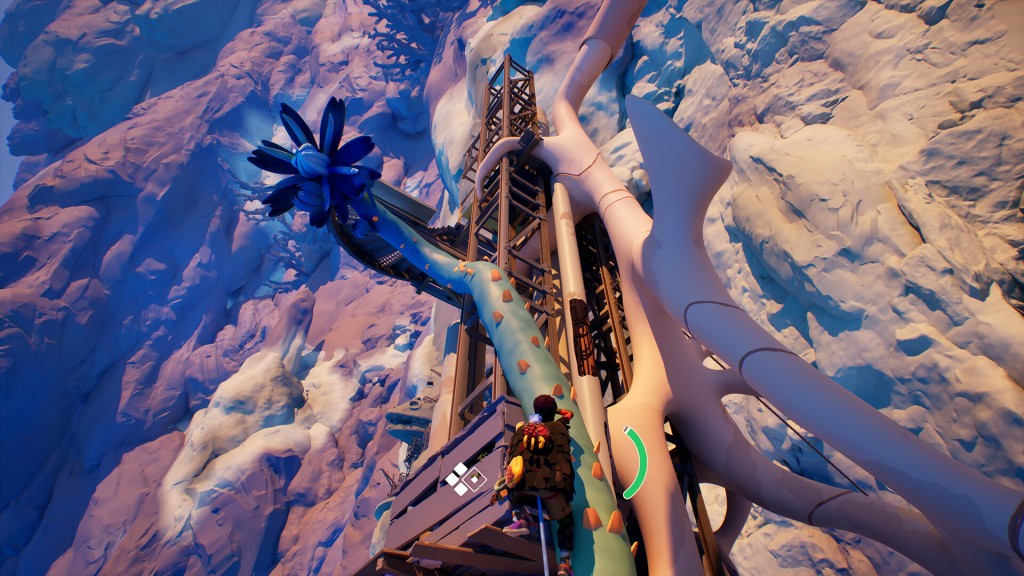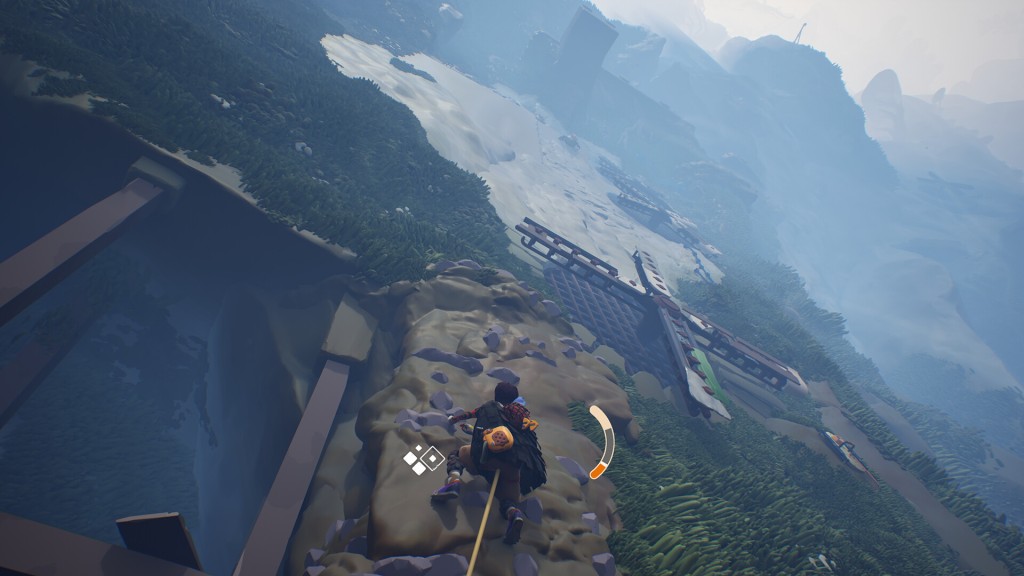I love when a game expands on a commonly seen mechanic that we take for granted. The prime example of this is how Death Standing turned both traversal and inventory management into its core gameplay hook. Running up cliffs and carrying hundreds of pounds of equipment is something that gamers have grown accustomed to, and Death Stranding made it so walking down a slight hill was a treacherous activity. Jusant does something similar, but for climbing. The entirety of the game is about the ascent up an impossibly high tower of rock. There’s no combat, no puzzles, fairly little exploration, and a story that is only told through the environment and the occasional note. Despite this, the meditative beauty of Jusant was enough to keep me going until the end.

Climbing has become a multi-purpose mechanic in a multitude of modern games. From basic traversal, to providing down time, to showing off the environment, to hiding loading screens, climbing has many uses and as such is absurdly common. Unfortunately, climbing is usually boring due to the simplicity of its implementation. Jusant makes strides to make climbing more interactive and thoughtful. You control both of the protagonist’s arms, grabbing onto handholds with each hand individually. This leads to a satisfying rhythm of alternating between the left and right triggers to ascend the terrain.
This simple change makes climbing far more engaging and immersive, but it’s not the only trick that Jusant has up its sleeve. You have access to a series of pitons and rope that always act as a safety system. You can never fall to your death; you only tumble a few dozen feet to where you last hooked into the wall. Pitons double as a self-managed checkpoint system and a way to place an anchor for some rope swinging. While Jusant isn’t terribly difficult, it is still nerve-wracking to swing and jump over a seemingly endless chasm.

Despite its efforts to make climbing fun, the biggest fault of Jusant is that it doesn’t do enough. There’s just not much thinking involved. You follow a straightforward path of handholds and ledges, just alternating between hands. The stamina system is barely worth mentioning as I never was in danger of running out of stamina. If you are running low, you just press a button and rest for a second to regain a large portion of the meter. I would have loved for the climbs to have a variety of routes to survey and choose from. Having to assess your options and think about how to reach your goal could’ve gone a long way to make the climbs more interesting. You could make more use of your tools, and there would be an actual threat of running out of stamina if you planned a poor route.
Even though I wish Jusant did more to make climbing more engaging, I still adored the surroundings of my ascent. The rocky tower is barren at its base, surrounded by miles and miles of desert. As you scale the tower you will find yourself in abandoned communities that have been carved into the sides of the mountain. Tiny collections of stone huts tell the story of tight knit communities that were deserted due to some ecological disaster. As you climb higher, you gain more hints about what happened to these people.

While Jusant has no dialogue, I found it told a poignant tale regardless. There’s a sense of mystery as to why the unnamed protagonist is determined to reach the summit with his frog-like companion. You find notes scattered throughout the journey which give a glimpse into the life of the people who inhabited the tower. Many players probably will skip these notes altogether, but I enjoyed piecing together how civilization crumbled. Seeing how the environment evolves as you scale gives you clues as to how this society functioned and then collapsed as the water dried up. Even without dialogue, the final scenes of Jusant manage to be emotionally impactful.

After the grueling nightmare of Alan Wake II, I needed a nice relaxing breather. And Jusant is perfect for that. The simple additions to traditional climbing mechanics make a normally boring concept more engaging. But I would have loved to see some more puzzle elements incorporated to encourage the player to carefully plan their routes. Nevertheless, I enjoyed the relaxing ascent and discovering more about this barren world. It is for these reasons that I give Jusant a 7/10. Transforming climbing into the main hook of a game and having it be fun is a tall order, and one that Jusant delivers on that.